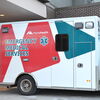Processing Your Payment
Please do not leave this page until complete. This can take a few moments.
- News
-
Editions
-
- Lists
-
Viewpoints
-
Our Events
-
Event Info
- Business Leaders of the Year Reception 2025
- Women's Leadership Forum 2025
- On the Road with Mainebiz in Bethel
- Health Care Forum 2025
- On The Road with Mainebiz in Greenville
- On The Road with Mainebiz in Waterville
- Small Business Forum 2025
- Outstanding Women in Business Reception 2025
- On The Road with Mainebiz in Bath
- 60 Ideas in 60 Minutes Portland 2025
- 40 Under 40 Awards Reception 2025
- On The Road with Mainebiz in Lewiston / Auburn
- 60 Ideas in 60 Minutes Bangor 2025
Award Honorees
- 2025 Business Leaders of the Year
- 2024 Women to Watch Honorees
- 2024 Business Leaders of the Year
- 2023 NextUp: 40 Under 40 Honorees
- 2023 Women to Watch Honorees
- 2023 Business Leaders of the Year
- 2022 NextUp: 40 Under 40 Honorees
- 2022 Women to Watch Honorees
- 2022 Business Leaders of the Year
-
-
Calendar
-
Biz Marketplace
- News
- Editions
- Lists
- Viewpoints
-
Our Events
Event Info
- View all Events
- Business Leaders of the Year Reception 2025
- Women's Leadership Forum 2025
- On the Road with Mainebiz in Bethel
- Health Care Forum 2025
- On The Road with Mainebiz in Greenville
- + More
- On The Road with Mainebiz in Waterville
- Small Business Forum 2025
- Outstanding Women in Business Reception 2025
- On The Road with Mainebiz in Bath
- 60 Ideas in 60 Minutes Portland 2025
- 40 Under 40 Awards Reception 2025
- On The Road with Mainebiz in Lewiston / Auburn
- 60 Ideas in 60 Minutes Bangor 2025
- - Less
Award Honorees
- 2025 Business Leaders of the Year
- 2024 Women to Watch Honorees
- 2024 Business Leaders of the Year
- 2023 NextUp: 40 Under 40 Honorees
- 2023 Women to Watch Honorees
- 2023 Business Leaders of the Year
- + More
- 2022 NextUp: 40 Under 40 Honorees
- 2022 Women to Watch Honorees
- 2022 Business Leaders of the Year
- Nomination Forms
- Calendar
- Biz Marketplace
As costs rise, employers look for the next perfect-fit coverage plan
 Photo / Tim Greenway
Nancy Marshall, CEO of Nancy Marshall Communications, in her office in Augusta.
Photo / Tim Greenway
Nancy Marshall, CEO of Nancy Marshall Communications, in her office in Augusta.
Like a lot of small business owners, when Nancy Marshall went to renew the health insurance policy for her 14 employees last fall, she was in for some serious sticker shock.
Deductibles were jumping from $500 to $2,500 for individual employees.
“Premiums were going to go up significantly so I started shopping around,” says Marshall, CEO of the public relations firm that bears her name. She switched to a plan that would allow her to keep the $500 deductible. “It just seemed worth it to make the switch.”
While Marshall knew staff would appreciate dodging the major price hike, since they were changing health insurance providers for the first time in seven years, she took pains to communicate the changes with her staffers, meeting with them repeatedly to explain what the changes would mean.
“Any time there's a change that affects their pocketbooks, it's unnerving,” says Marshall.
“We just wanted to reassure them that actually this would be better for them.”
Indeed, Marshall was one of a number of small business owners making the change this year as the cost of providing health insurance is rising faster than ever.
Nearly half of all employers that offer health benefits shopped around for a new health plan in the past year, according to the Kaiser Family Foundation's Employer Health Benefit Survey. Smaller employers were more likely to shop around than larger firms. All told, 24% of firms changed insurance carriers.
It's no wonder. Health insurance premium renewal rates increased by 6.2% for all plans in 2015, up from a 5.6% rise the previous year, according to a survey by United Benefit Advisors, an Indianapolis-based employee benefit advisory firm. Small businesses with 25 employees or less were hit the hardest.
HR directors shopping around
Karen Dobbyn, a human resources consultant with KMA Human Resources Consulting in Falmouth, says jumps from $500 to $2,500 that Marshall was facing are typical of other increases she has seen this year.
“I definitely see employers shopping around more than they have in the past,” Dobbyn says. “Health care costs are so expensive. Regardless of how financially successful employers are, health insurance is often their biggest business expenses. So they're always trying to find the most reasonable costs for the level of benefit.”
Communication is a huge problem. According to a survey by the Society for Human Resource Management, 80%, of organizations reported that participants in benefit plans don't open or read communications materials, 49% don't understand the materials, and 31% don't perceive the value of their benefits.
She urges companies to work with an insurance brokers, who can help find the lower rates, and negotiate lower rates. Many brokers are also willing to come help employers explain plan changes to staff and bring in representatives from the insurance companies, for one-on-one conferences with employees who don't feel comfortable asking questions in big group meetings.
Dobbyn urges employers to send information about plan changes to employees as early as possible, through email, printed material and other available channels.
“You don't want your employees to be surprised because you didn't give them the information or the employee didn't understand,” Dobbyn says.
She also urges employers to make sure that the information gets home to the employee's spouse or partner, in case the spouse or partner will be the one making the decision about changing coverage.
Emily Brostek, executive director for Consumers for Affordable Health Care, says that her nonprofit fields many calls to its free help line from workers who are confused about their coverage and their health care costs. She urges employers to sit down with employees individually to find out what health insurance benefits they value the most.
“Just having that dialogue is an important place to start, especially if you're thinking about a change,” Brostek says. “You can't always give employees everything that they want. But at least you can find out what's important to them as you navigate options and make decisions.”
Indeed, Bruce Elliott, manager of compensation and benefits for the Society of Human Resource Management, agreed to survey employees on the benefits they use. HR directors are sometimes surprised by what the most popular benefits are, and what nobody is using.
“You could save a little bit of money so you don't have to make significant cuts or changes to the medical plan,” he says. “That way your decisions are much more informed.”
For Marshall, though only about half of her staff uses the coverage — the others are covered by insurance through spouses or parents — avoiding big price hikes was critical for the sake of employee retention.
Since the firm is based in Augusta, with its state workers and an abundance of companies, it faces a competitive market for staffing.
“Having the best people is really important to the quality of the service that we provide,” she says. “So having competitive benefits, like health insurance and 401K, is really important. The state offers [employees] a lot of benefits that we just can't afford and we have to do as much as we can to be competitive.”
Tips for making the switch
Bruce Elliott of the Society of Human Resource Management offered these tips for employers as they consider switching health insurance plans or carriers in the year ahead.
1. Start early: If you're considering making a change in the next calendar year, start surveying your workers and exploring your options in the late summer and early fall, so that you have plenty of time to shop around and communicate with employees before any changes would take effect.
2. Consider the demographics of your staff: Tailor your communications about the change to the demographics of your workforce. Employees of different ages tend to take in information in different ways, says Elliot. Millennials, who tend to be very socially engaged, will use social media and consult friends, parents, and coworkers as they're making their decisions, so a social media app might be more appropriate to reach that demographic. Baby boomers might be more receptive to emails, FAQs and group meetings.
3. Run real-world comparisons: If you are changing plans, or offering multiple plans, compare the cost of different health care expenses across the different plans. Showing the cost of, say, repairing a torn ACL, under the different plans, will help workers make more educated decisions about which plans will work best for them. “That way, employees can make reasoned decisions based on data, instead of just saying 'I've always been on this plan, this is what I've always chosen,'” Elliot says. Again, target your message to meet the needs of your workforce. For an older workforce, an example of heart disease or diabetes might be the most relevant example. A younger staff might be more interested in the cost of repairing a sports injury. Younger workers might also benefit from a review of the costs of prenatal care, labor and delivery.
4. Show how you line up to industry peers: Gather data about average health insurance for companies of your similar size, in your industry, in your local market, and across the nation. Show how the cost of the benefits that you're providing stacks up to those averages, says Elliott. Groups like the Kaiser Family Foundation offer lots of information that can help employees get some perspective, especially if your rates are going up. Seeing that other companies in the same industry, or of similar size or in the region are facing the small challenges, will help them digest any price increases.









Comments